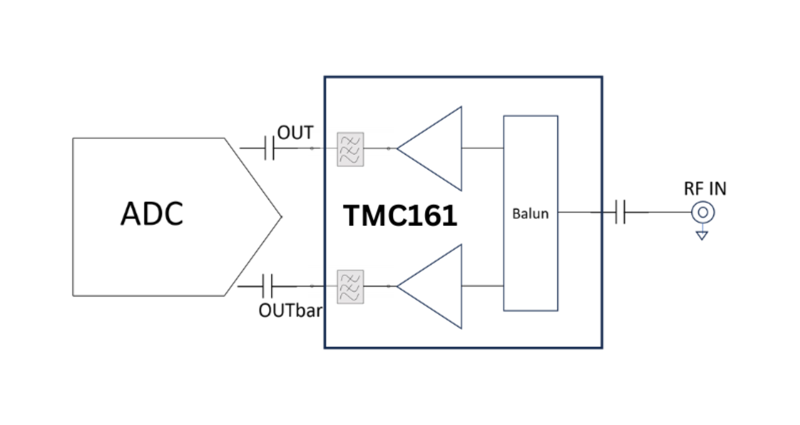mmTron Announces Low Noise, High Linearity RF to A/D Converter Interfaces
mmWave semiconductor startup mmTron Inc. announced a family of MMICs for driving high-speed analog-to-digital (A/D) converters. The TMC161 family converts a single-ended RF input to a differential output to drive A/D converters for direct-sampling applications from L/S/C- into Ku- and Ka-Band. The TMC161 provides low noise, high linearity (low IMD2 and IMD3 distortion) amplification, and anti-alias filtering.
Increasing data converter Nyquist sampling rates and instantaneous bandwidth have enabled a simplified RF front-end architecture to be adopted by many applications. System benefits include more straightforward frequency planning; high spur-free dynamic range (SFDR); reduced latency; low analog phase and amplitude uncertainty; simplified channel synchronization; and smaller size, weight, power, and cost (SWAP-C).
“Higher A/D converter sampling rates are enabling direct digital conversion at ever-increasing bandwidths, making the quality of the RF signal presented to the A/D converter critical to maximizing the system’s dynamic range and sensitivity,” said Seyed Tabatabaei, mmTron’s CEO and founder. “Our skilled team designed the TMC161 family to provide high SFDR and low noise amplification with low IMD2 and IMD3 distortion while converting a single-ended RF input to the differential signal required by high sample-rate A/D converters. The integration provides SWAP-C advantages for software-defined radios.”
EW systems must simultaneously track multiple targets and instantaneously tune across a wide frequency range to implement complex sweeping and hopping patterns. The TMC161 and its companion TMC160 digital-to-analog (D/A) converter interface extend the frequency range of direct digital processing in these systems into Ka-Band.
In addition to EW, the TMC161 simplifies the design of software-defined radios for instrumentation, radar, satellite communications, and 5G, enabling the receiver to process a much wider instantaneous bandwidth in less time than previous solutions.

